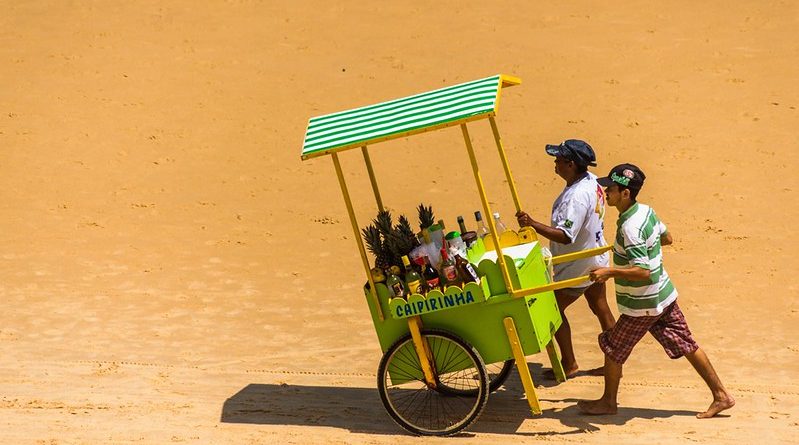A Taste of Brazilian Cuisine
Food Facts
Staples: Rice, black beans, manioc & manioc flour with chicken & beef.
Specialities: Bahian food – famous for basic stews.
Best Dish: Ferijoada – bean & beef dish typifying Brazilian food.
Watch out for: Manioc – when eaten raw is poisonous!
Brazil’s cuisine is the product of tradition and circumstance. Each region and state has developed its own unique cuisine based on indigenous culture, location, and farming.
Coffee
No-one does anything in Brazil without a few cups of coffee inside them. Vendors are everywhere selling it strong, sweet and in small, potent doses. Brazil is the world’s biggest coffee producing nation, and coffee plantations cover huge amounts of land. A Brazilian coffee is mild and composed of arabica or robusta seeds. A good cup will have a clear flavour, slightly sweet, medium-bodied and low in acidity. There is likely to be Brazilian coffee in every espresso you drink. The best crops are to be found in Minas Gerais and Sul de Minas.
Introduced into Brazil in 1727, these days Brazil is a strong player in the speciality coffee market, typically known for producing largely low quality “mixers” in the world coffee market.
Bahian Food
Bahian cuisines dates back from the times of slavery when masters would give their slaves yesterday’s left-overs to eat. They would mix the scraps with fish if they lived near the sea or rivers and make cooking pot stews. A typical recipe may be a Bahian fish stew using coconut milk, tomatoes, peppers and lemon juice.
Specialities include:
Acarajé: Made from peeled white beans mashed in salt and onions and then fried in a strong oil. The filling is called Vatapá and is made with manioc paste, nuts and smoked shrimps.
Pato no tucupi: A favourite dish of the Amazon, which is piece of duck in a rich wild green herb sauce.
Manioc
Manioc is a root vegetable and Brazil’s staple food. Raw, it’s poisonous and it’s also used to make laundry starch. To de-toxify the Manioc, it must be peeled, grated and the pulp is put in tipitis, cylinders made of plant fibres which expresses the poisonous juices. The pulp is then washed, roasted and made into flour. The poisonous liquid is boiled down to remove the poison and make a sauce known as tucupi. Sweet manioc is boiled and eaten like potatoes and also deep-fried and eaten like chips.
Cachaca
Cachaca is a high proof and very cheap sugar cane alcohol produced throughout the country.
It’s made from distilled sugar cane, in such a way to retain the scent of sugar and a flavour typical of rum.
Brazil has 4,000 brands of cachaca and produces 1 billion litres of the stuff every year. Made into Caipirinha with lime, sugar and crushed ice, it’s delicious but dangerous. It can do serious damage to your stomach and produces a lethal hangover. It is the most popular drink among Brazil’s poorest people and the national drink, second only to beer. It has been adopted in recent years as an “in” drink in the USA and Canada where the brands “cachaca 51” and “pitu” are popular.
Cachaca is a cousin of the Spanish-Portuguese brandies, closely related to Italian grappa. Cachaca means “burning water” and there is nothing subtle about this drink. You can counteract the toxic taste by mixing it with pineapple, papaya or other tropical juice mixers. It is used in numerous drinks and cocktails like Nightboat to Brazil, lambada and Woody Woodpecker.
Tacaca
Tacaca is an Indian dish sold on every street corner in the afternoons. It is a yellow soup made mainly from different forms of manioc, laced with dried shrimp and garlic, jambu leaves and lots of chilli.
Feijoada
Popular in Rio de Janeiro, this dish typifies Brazilian cooking. It is a bean dish with beef, smoked sausage and other parts of the pig, garlic and chilli peppers. Served on top of white rice and garnished with manioc flour to thicken the sauce and garnished with collard greens and orange slices.
Main image: Caipirinha sellers in Brazil by Dante Laurini – Flickr Creative Commons.
By Susi O’Neill




